Can I Use Earthworms For Composting? (Truth about Compost Worms)
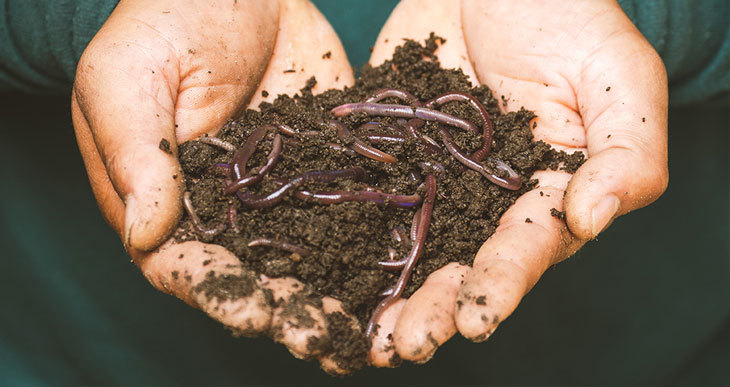
Composting is an activity every serious gardener will engage in at some point!
And most gardeners are aware that earthworms are great for the soil on many levels, but how beneficial are they for creating compost?
Should earthworms be included in your composting strategy to enrich the compost and break it down faster?
Keep reading for the low-down on whether earthworms will benefit your compost or not!
Can I Use Earthworms For Composting?
Worms can be used for composting, but not all earthworms make good composting worms. You need a specific type of composting worms that are less affected by high temperatures in the compost and like to eat decomposing organic materials.
When you start making your own compost at home, one of the greatest challenges is the time it takes to create rich, nutritious compost. Compost material left in an unmanaged pile can take up to 12 months to create a compost suitable to provide food for your garden.
Managed compost methods can reduce this timeframe significantly and produce usable compost in 4 to 8 weeks, especially if we harness the benefits that worms can offer to the process.
What most gardeners don’t know, particularly when creating their own compost for the first time, is that not all earthworms make good composting worms.
Understanding the key differences between “common earthworms” and “composting worms” is essential.
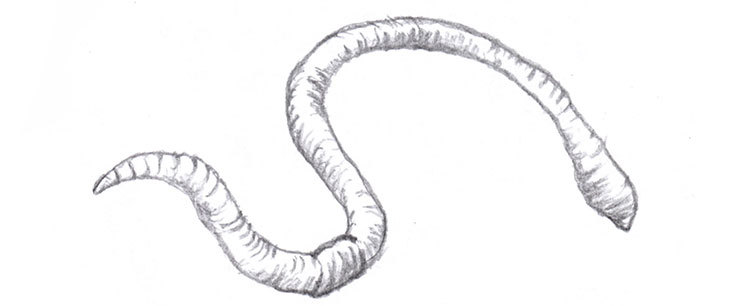
Compost Worms Vs. Earthworms
Earthworms differ from compost worms because they thrive in different conditions. An earthworm prefers to consume soil, burrow deep into the ground, and is a solitary creature. Compost worms prefer to eat rotting organic matter and live nearer the surface in groups. Regular earthworms are also bigger than compost worms.
All composting worms are earthworms, but not all earthworms are composting worms!
Confused?
Technically speaking, all worms are referred to as “earthworms,” but there are significant differences between species.
In a compost pile that is open to the ground, you may find a variety of earthworm types. They will all add something beneficial to the composting process in their own way.
But you can’t just collect any type of worm and hope it will benefit your compost. You need to use the correct species of worm that actually enjoys living in a composting environment.
Adding the correct type of earthworm will help maximize output and produce good compost in a relatively short time. While adding the wrong type may add minimal benefit to the process.
Are Compost Worms The Same As Earthworms?
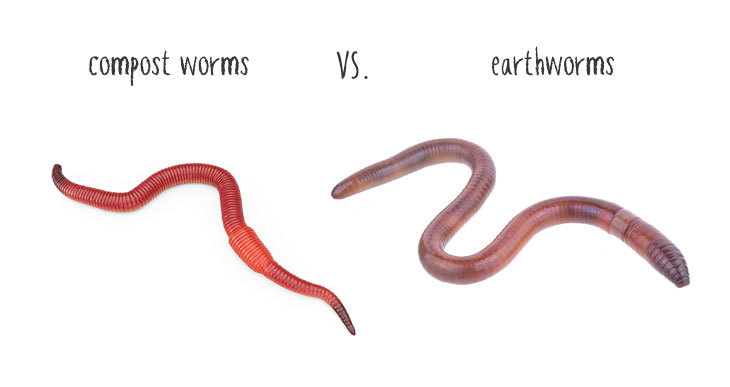
Compost worms are not the same thing as regular earthworms. Earthworms are usually referred to by the generic term “earthworms” or “common earthworms.” Composting worms are a different species and are typically given names like “redworms” or “red wigglers.”
Redworms are from the earthworm family, but their habits and living environment differ from common earthworms. They have characteristics that offer more benefits to your compost than earthworms.
Red wiggler worm’s natural environment is the layer of decomposing material that sits on top of the ground. This is because most of their food supply is located in this zone (they are a type of worm known as “litter dwellers”). These composting worms feed on decaying organic materials. Still, they will also eat fresh or “wet” organic matter, such as kitchen scraps.
Redworms can exist in a wide variety of temperatures. As a result, they can withstand the hotter conditions found inside a decomposing compost pile.
Common earthworms prefer to live deeper in the soil. Their food will comprise of older, “dry” decomposing organic matter and bacteria in the soil itself (these types of worms are known as “topsoil or subsoil dwellers”). Earthworms will ingest soil particles to help grind up the relatively dry organic matter they consume.
Because earthworms thrive in the deeper subsoil layers where temperatures are cooler, they do not easily support the higher temperatures inside a compost heap.
Another advantage of earthworms is that they burrow in the soil, which helps aerate the soil and bring oxygen to plant roots.
While earthworms help with decomposition, their contribution is not as significant for composting purposes as redworms.
Here’s a summary of the principal differences which set compost worms apart from common earthworms:
Note: If viewing on phone, please swipe the table to scroll horizontally.
|
| Compost worms: | Earthworms: |
|---|---|---|
Common name: | Redworms, red wiggler worms, manure worms | Common earthworm |
Scientific name: | Eisenia Fetida | Lumbricus Terrestris |
Color: | Red-brown | Grey-brown |
Size: | Up to 2 ½ inches / 6cm (smaller) | Up to 12 inches / 30cm (larger) |
Living environment: | Near or on the soil surface (litter dwellers) | Under the surface at topsoil or subsoil level |
Climate temperature: | Can support warm temperatures | Prefer cooler environments |
Food: | Decomposing organic waste such as kitchen scraps | Soil and well-decomposed organic material |
Good for compost? | Yes | No |
What Type Of Worms To Use For Composting?
In contrast to common earthworms, compost redworms live above the ground in the decomposing vegetation sitting on the surface and in the loose topsoil. This makes them the ideal type to aid the composting process.
Composting worms are prolific feeders and will process a greater volume of organic material than common earthworms. Earthworms do not show much interest in eating fresh or “wet” organic matter, such as overripe fruit that falls off trees or kitchen waste. But composting worms thrive on this diet.
Composting worms eat a higher quantity of organic matter and a greater diverse range of organic matter, making them the preferred choice of worms for gardeners making their own compost.
Best Worms For Composting
Red wigglers are the best compost worms to decompose plant matter fast and in high volumes. They can process half their body weight in kitchen scraps per day. In addition, their castings are highly nutrient-rich and contain beneficial micronutrients for plants.
If provided with the right environment and plenty of food, these worms will multiply rapidly. They will consume any decaying organic material such as leaves and organic kitchen waste such as vegetable peelings and overripe fruit.
Suppose your compost pile is open to the ground. In that case, you may find earthworms in the compost from time to time as they come to the surface now and again for a compost snack before retreating back below the soil surface.
Some gardeners include animal manure in compost. In that case, redworms (also known as manure worms) are good to have in your compost pile since they specialize in breaking down manure.
Read this for a complete guide on the best composting worms.
Can Earthworms And Red Wigglers Live Together?
Since earthworms and red wigglers are both earthworm species, can the two types of worms live together in the same compost?
Earthworms and redworms can live together in the same compost. Still, they have evolved to prefer different environments and occupy different layers of the soil structure.
Earthworms prefer deeper soil layers and only come to the upper layers periodically. On the other hand, compost worms prefer to remain in the upper layers and the humus above the soil.
Earthworms do not breed as prolifically as red wigglers. They prefer not to live in a high concentration of earthworm populations. Conversely, red wigglers are happy to reproduce and live in large numbers in a small area. Earthworms and compost worms will not interbreed with each other.
In a compost pile open to the ground, you may find transient earthworms in the compost pile. However, they will retreat lower into the soil when the temperature above ground becomes too hot or too cold, or the population of worms in the compost becomes too great.
Is It Good Practice To Add Worms To Compost?
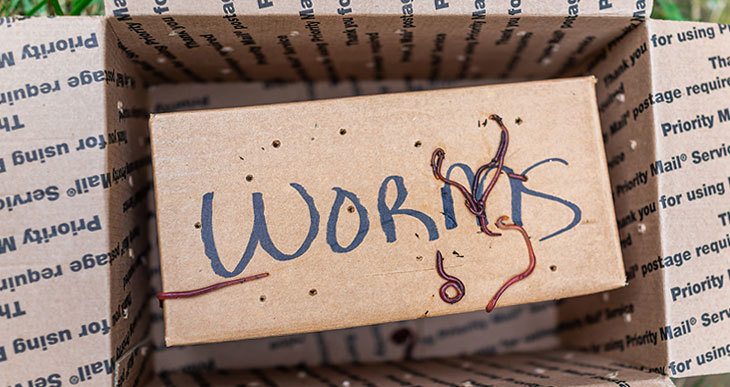
You can add worms to your compost, or you can wait for the worms to come by themselves. However, adding your own redworms to the compost is good to boost the numbers immediately and speed up the decomposition rate at the beginning of the composting cycle.
Waiting for the worms to arrive naturally may take a long time to happen, especially if you have poor soil in your location. I have an in-depth article on Adding Worms To Compost which will give you a rundown of how to add worms and attract worms to your compost.
You can buy packs of red wiggler composting worms online here…
Can You Add Too Many Worms In Your Compost?
Generally, no specific number is considered an optimal number of worms per square inch in your compost, so don’t worry about adding too many.
One of the concerns that new compost makers ask is what will happen if they add too many worms to their compost.
The worm population will find a natural balance according to the available food in the compost. But, of course, it is a waste of money to add too many worms since the excess worms will usually die off if there is insufficient food to feed all the worms.
It is best to start with fewer red wigglers since these worms breed readily and will soon bring the population of worms to the optimal number for the compost pile.


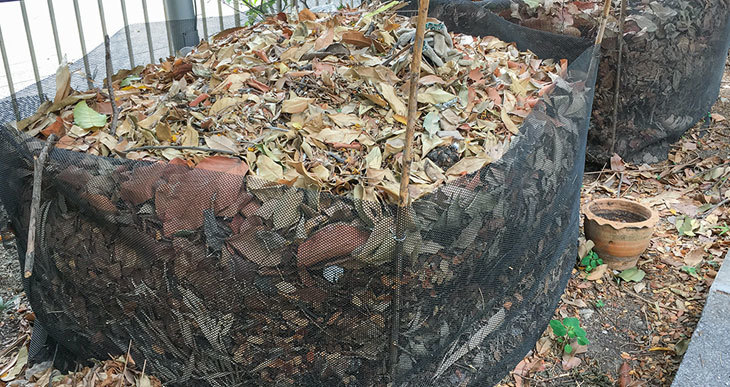
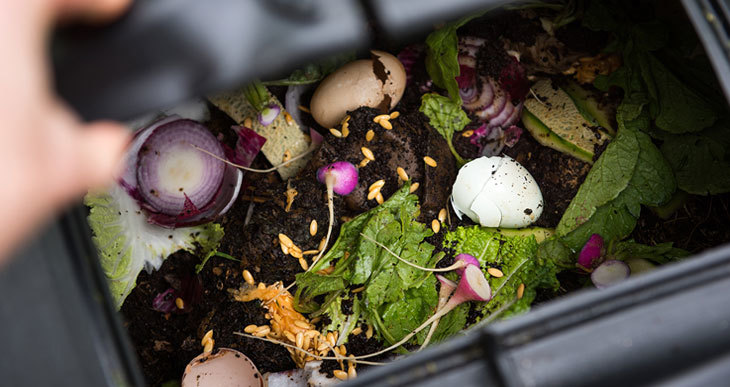
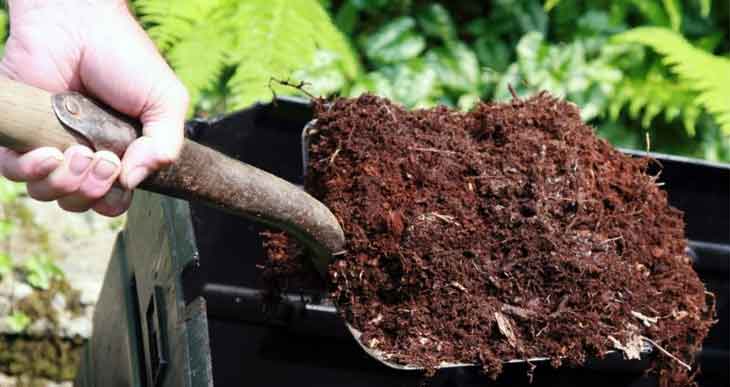

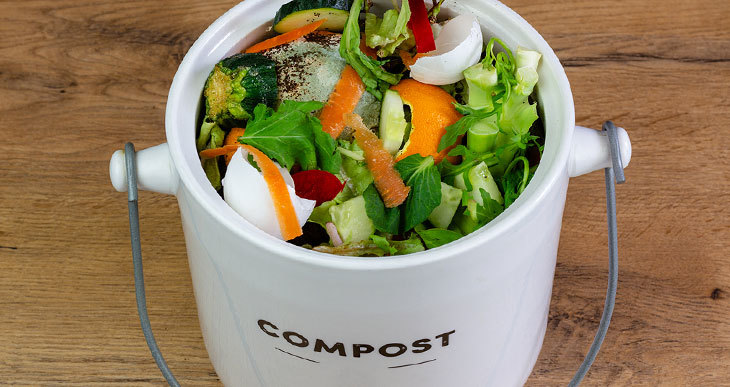
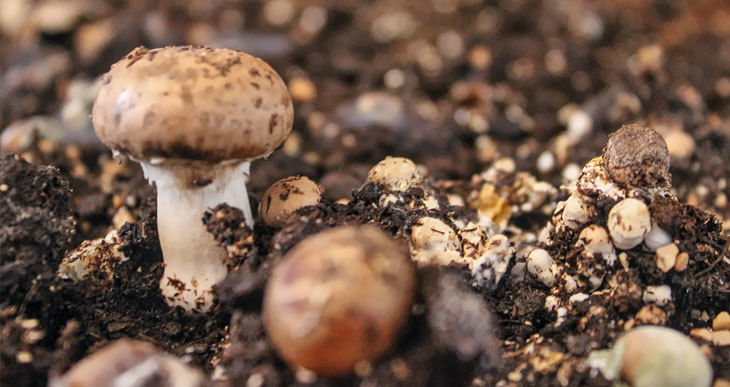
WoW ! Crystal clear article !! Many thanks to you
You’re very welcome Suresh
Happy composting !